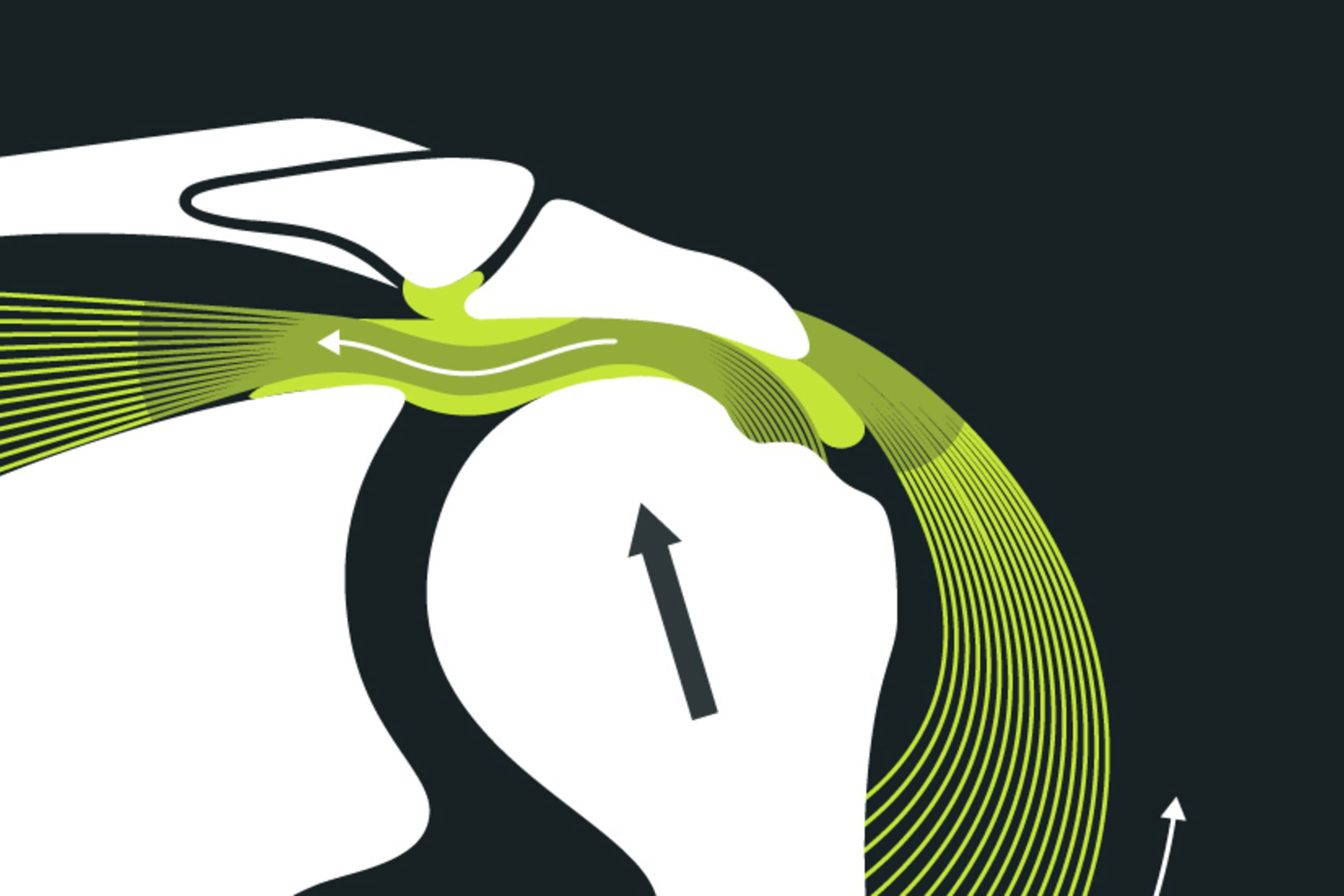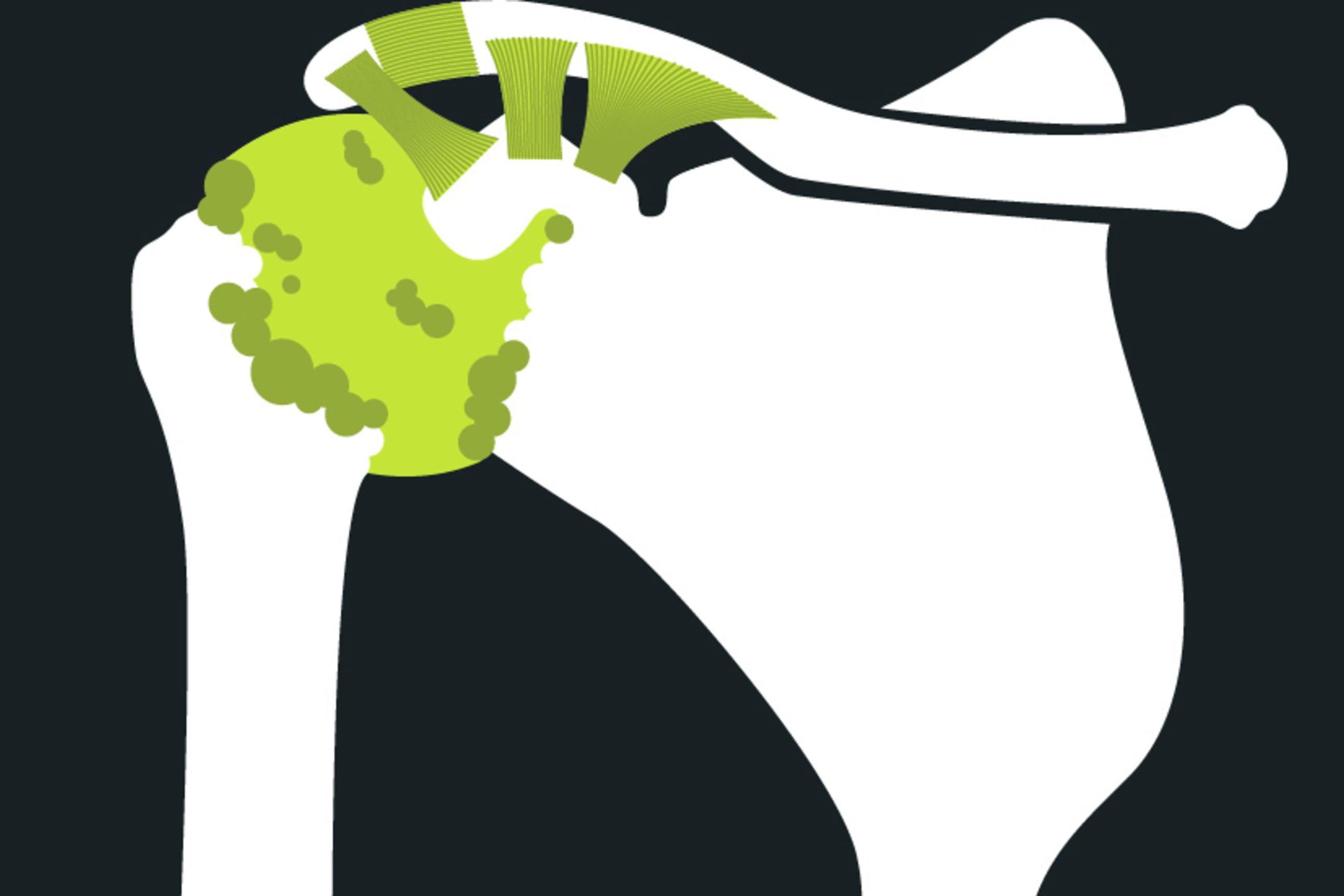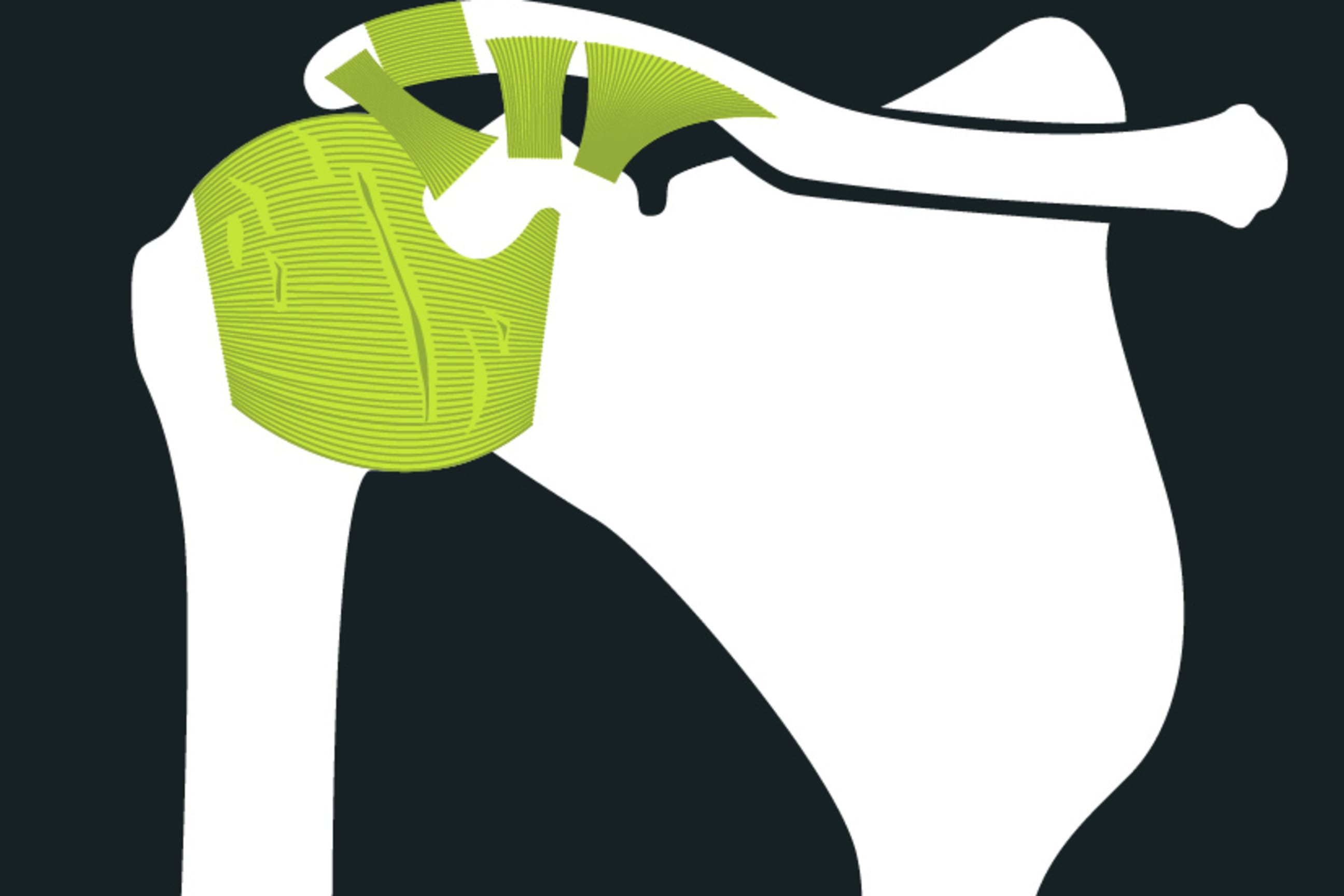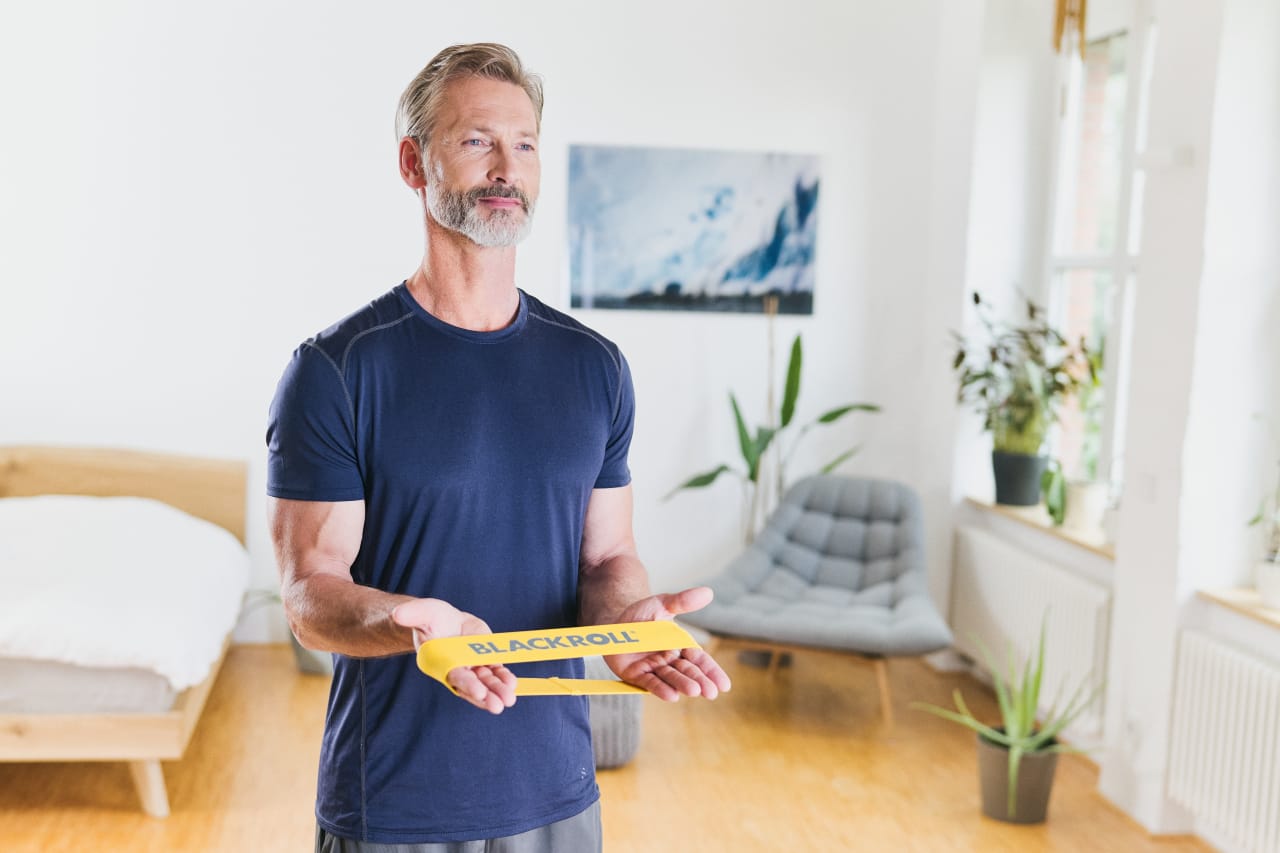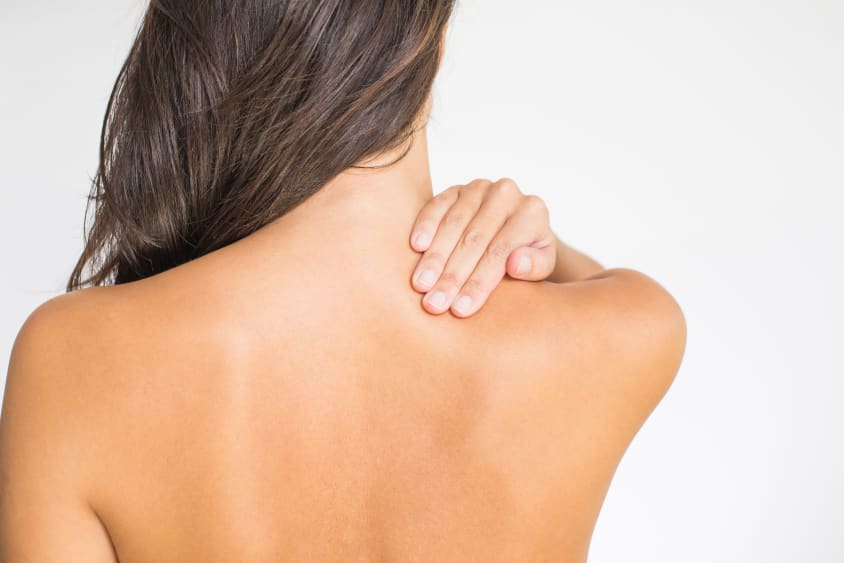
Do you have pain in your shoulder? You are not alone.

Up to a quarter of the population has shoulder pain right now, and up to two thirds suffer from it at least once in their lifetime. Women are affected a little more than men. Shoulder pain is the third most common reason (after lumbar and cervical spine pain) why people go to physiotherapy.
The likelihood of pain in the shoulder joint increases with age. It most often affects people between the ages of 50 and 60, and their everyday life, work and free time are often significantly restricted as a result. In addition, shoulder pain is frequently recurrent.
01. What is shoulder pain syndrome?
Various causes of pain are summarized under shoulder pain syndrome. It’s often difficult to clearly distinguish between them because the shoulder joint is very complex. It is closely connected both functionally and biomechanically to adjacent body areas. Shoulder pain does not necessarily have to originate in the shoulder, it can also radiate from the cervical spine, the neck, the shoulder girdle, the arm on that same side or even from internal organs. The other symptoms also often overlap.
02. What are the most common symptoms of shoulder pain?
Shoulder pain syndrome is primarily associated with pain. Depending on the cause, it mainly occurs during or after exertion, at rest and/or at night. It can be limited to the shoulder region or radiate up and down. You often notice limited mobility and/or loss of strength in one or more directions at the same time.
03. What are the causes of shoulder pain?
The causes of shoulder pain can vary. The pain can be acute or chronic (longer than three months).
Acute shoulder pain
Acute shoulder pain can be caused by a fall or accident that may have resulted in the upper arm bone breaking (fracture). The consequences can be sharp pain, limited mobility up to complete immobility, swelling and bruising (hematoma). People with osteoporosis also frequently have fractured bones.
A separated shoulder is also caused by trauma. As with a fracture, a separated shoulder also causes sharp pain, but it is rather more localized on top of the shoulder. You can often see the formation of a step on the side of the shoulder, between the humerus and the collarbone, with the naked eye. The acromioclavicular joint is also very sensitive to pressure.
A fall or accident can also lead to dislocation of the shoulder joint (luxation). A dislocated shoulder is the most common of all joint injuries. Signs: severe pain and limited mobility. Sometimes, there is also an injury to the joint lip (labral lesion) and the joint capsule of the shoulder as well as sensory disturbances due to impaired nerves. A labral lesion often manifests itself through sharp pain, a cracking or snapping sound when moving the shoulder and a feeling of instability.
It can also just as suddenly develop into a rotator cuff lesion. Rotator cuff is the term used for the shoulder muscles and tendons that surround the upper arm bone: supraspinatus, infraspinatus, teres minor and subscapularis. They can become damaged or tear if overexerted, causing sharp pain with painful, limited mobility and loss of strength. Depending on which direction of movement is most clearly associated with pain and/or loss of strength, we can draw conclusions about the injured muscles and tendons.
Chronic shoulder pain
Shoulder osteoarthritis (arthrosis) is a very common cause of chronic shoulder pain. This mainly occurs in older people and causes persistent pain with every movement. The shoulder feels stiff and immobile, and you can often hear rubbing noises when it moves. Morning pain is typical for this type of osteoarthritis. In other words, your shoulder initially feels uncomfortable after you wake up, but it improves after a while with gentle movement (for example, when you make breakfast). It can also develop into osteoarthritis of the shoulder joint. This makes itself particularly noticeable through pain when lifting your arm and lying on the affected shoulder. Sometimes, a change in the shape of the joint as a result of bone spurs (osteophytes) is visible from the outside.
- Impingement syndrome
An impingement syndrome also frequently leads to chronic pain in the shoulder. With shoulder impingement syndrome, the shoulder muscles and the shoulder tendons can become compressed between the humerus and the roof of the shoulder (acromion), resulting in an injury to the tendon (tendon lesion). The supraspinatus tendon and infraspinatus tendon are usually affected. In addition, the bursa there and the long tendon of the biceps may be damaged. When you spread your arm, you feel a deep, sharp pain in the shoulder joint. The pain primarily occurs at an angle of 60° to 120° – this is called the painful arc. As time progresses, you may develop inflammation of the shoulder tendons and bursitis in the shoulder. This can suddenly manifest as nightly pain and shoulder stiffness.
- Shoulder osteoarthritis (arthrosis)
Shoulder osteoarthritis (arthrosis) is a very common cause of chronic shoulder pain. This mainly occurs in older people and causes persistent pain with every movement. The shoulder feels stiff and immobile, and you can often hear rubbing noises when it moves. Morning pain is typical for this type of osteoarthritis. In other words, your shoulder initially feels uncomfortable after you wake up, but it improves after a while with gentle movement (for example, when you make breakfast). It can also develop into osteoarthritis of the shoulder joint. This makes itself particularly noticeable through pain when lifting your arm and lying on the affected shoulder. Sometimes, a change in the shape of the joint as a result of bone spurs (osteophytes) is visible from the outside.
- Frozen Shoulder
Even a frozen shoulder can cause chronic shoulder pain. At first, it almost always occurs on one side; however, later on it can also affect the opposite shoulder joint. The initial symptom is usually shoulder pain that you also feel at night. Shortly afterwards, you develop severe restrictions in mobility in all directions (freezing phase), with external rotation being the most affected. After about four to six months, your shoulder joint is almost completely stiff (frozen phase). The mobility often gradually starts to return after eight to 12 months (thawing phase).
Psychological stress linked to chronic shoulder pain should also not be underestimated. It is often associated with muscle hardening and tension changes to the fascia. This creates dull muscle pain and general stiffness in the shoulder, neck and arm area.
04. What can help you with shoulder pain
A lot! Regardless of the cause, shoulder pain always leads to the same physical abnormalities. If you specifically improve them through specific exercises, your pain will often decrease and your shoulder joint will become more flexible and functional again. Physical exercises are often even more successful than other therapies. Keep in mind that every exercise must be and remain painless. To do this, you may need to start at a lower intensity and keep the range of motion low. You can then gradually increase the intensity. And another tip: make sure you have good posture and movement control.
The BLACKROLL® approach combines myofascial techniques with mobilization and stretching exercises. Finally, it is important to build the muscles that are needed for healthy shoulders.
05. How to prevent shoulder pain
Improve your posture: Always remember: keep your chest out, shoulders back and head straight. Is it hard for you to adopt good posture in everyday life? Try it with the BLACKROLL® POSTURE – a posture trainer for your back and shoulders. The POSTURE improves your body awareness the first time you put it on.
Reduce severe overuse of the shoulder joint: the shoulder joint is the most flexible joint in the body. That makes it more susceptible to injury. Reduce stereotypical overhead movements in your everyday life and avoid sleeping on the same shoulder with your arm in an overhead position.
Exercise your upper body evenly: too many people concentrate on the muscles that are clearly visible in the mirror when they go to the gym and often neglect the other muscle groups. The consequences are muscle imbalances and pain. You should therefore perform at least one pulling exercise for each pressing exercise. Example: if you bench press once a week, you should also do an exercise like rowing.
